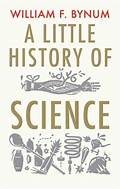
“A Little History of Science” by William Bynum takes readers on an engaging journey through the fascinating world of scientific discovery. Let’s explore the key elements:
Main Characters:
The book does not follow specific central characters, as it is more of a historical overview. However, the protagonists are the scientists themselves—both famous figures like Einstein and Watson and lesser-known contributors. Their motivations vary: curiosity, a desire to understand the natural world, and the pursuit of knowledge.
Plot:
The central conflict revolves around the evolution of scientific understanding. From ancient Greek philosophers to modern computer-assisted researchers, humanity has sought to make sense of the universe. The story unfolds chronologically, covering pivotal moments such as the revelation of the DNA molecule. Scientific findings often challenge established ideas, leading to uproar and paradigm shifts.
The resolution lies in the ongoing march of science—a process that continually reshapes our understanding of reality. The book celebrates both groundbreaking discoveries and the incremental progress made by countless scientists over centuries.
Setting:
The setting spans time and space. It takes readers from ancient Greece to the present day. The scientific quest occurs everywhere—from laboratories to observatories, from the depths of the Earth to the reaches of outer space. The setting influences the characters’ pursuits, shaping their experiments, theories, and interactions.
Themes:
Several underlying themes emerge:
- Curiosity and Wonder: Scientists are driven by curiosity, seeking answers to fundamental questions about existence, matter, and life.
- Challenging the Status Quo: Scientific progress often disrupts established beliefs, leading to paradigm shifts and sometimes controversy.
- Collaboration and Competition: Scientists collaborate, compete, and build upon each other’s work, advancing knowledge collectively.
- Ethics and Responsibility: The book touches on ethical dilemmas faced by scientists, such as the use of scientific knowledge for good or ill.
Conclusion:
“A Little History of Science” invites readers of all ages to appreciate the unpredictable nature of scientific inquiry. It celebrates the human spirit of exploration, resilience, and intellectual curiosity. Whether you’re a seasoned scientist or simply curious about the wonders of the natural world, this book offers a delightful and accessible exploration of our scientific heritage.
Also read…
- A Little History of the World: A Journey through Time
- “A Little History of Religion” by Richard Holloway


